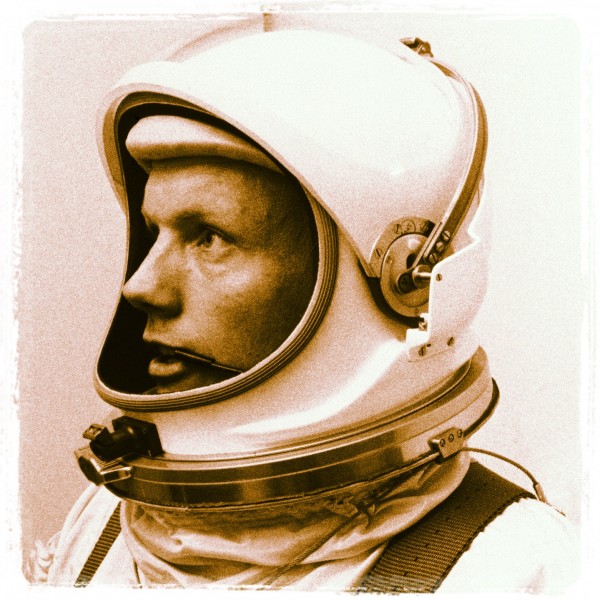
ASSOCIATED PRESS: In the hours after Armstrong’s death was announced, news networks were airing canned programming — jailhouse documentaries, a rerun interview with Rielle Hunter, Mike Huckabee’s weekend show. Menacing satellite pictures of Tropical Storm Isaac had much more air time than Armstrong’s dusty hops on the lunar surface. Talk of the upcoming GOP national convention sucked up the air. A trio of factors played in to the lack of attention. First, Armstrong died in Cincinnati on a Saturday. Not just any Saturday, when news organizations have a skeletal staff, but a late August weekend. Half the country is at the beach. It’s not a stretch to think inexperience on duty might have played a role in NBC News’ embarrassing gaffe: a website headline that read: “Astronaut Neil Young, first man to walk on the moon, dies at age 82.” (NBC called it a staffer error and said the mistake was taken down after seven minutes.) […] Armstrong’s determined effort to live a quiet, private life after his astronaut days also left TV at a disadvantage. There was relatively little tape on hand to roll from interviews reminiscing about his experiences, reunions with old astronauts or public appearances. No Armstrong chats with David Letterman. No appearances in music videos. There was the moon walk, and not much else.MORE
LOS ANGELES TIMES: I watched Neil Armstrong take his giant small step onto the moon at my best friend Brian’s house. It was July 20 1969, and just before 8 p.m. in L.A., and the sun was still out. Thinking back, I see light filtering in through curtains, pulled shut possibly to help us better feel the history being made (remotely) before our eyes, on a big square black-and-white TV showing a black-and-white picture beamed from 238,900 miles out in space. Or perhaps they were always closed like that. Things we might otherwise have been doing then and may have been doing right before or afterward included swimming, reading comic books and making recordings on Brian’s reel-to-reel. We would have not have missed the moon landing, though — and not only because Brian was an avid junior astronomer who likely knew how far away the moon was, while I had to look it up just now — but because if you were anywhere near a television, the moment demanded you watch. An estimated half a billion people saw Armstrong set foot where no foot had been set before. MORE
THE PRESIDENT OF THE UNITED STATES: For those who may ask what they can do to honor Neil, we have a simple request. Honor his example of service, accomplishment and modesty, and the next time you walk outside on a clear night and see the moon smiling down at you, think of Neil Armstrong and give him a wink. MORE
![]() RADIO TIMES: NASA’s Curiosity rover has been on the Martian surface for three weeks now and so far, except for a broken wind sensor, everything has gone according to plan. After an eight and a half month journey to the red planet and an incredible nail-biting descent and landing, Curiosity has been testing its systems, readying itself for its two year mission searching for life-supporting conditions in the Gale Crater. The 6-wheeled rover has extended its arm, blasted Martian rocks with its laser, spun its wheels, and taken short test drives. This hour, we’ll talk with two NASA engineers about the mission, the Rover, what they hope Curiosity will reveal, and what’s next. ADAM STELTZNER is the Lead Engineer for Entry Descent and Landing at NASA’s Jet Propulsion Laboratory, and FRANK HARTMAN is a Curiosity Rover driver.
RADIO TIMES: NASA’s Curiosity rover has been on the Martian surface for three weeks now and so far, except for a broken wind sensor, everything has gone according to plan. After an eight and a half month journey to the red planet and an incredible nail-biting descent and landing, Curiosity has been testing its systems, readying itself for its two year mission searching for life-supporting conditions in the Gale Crater. The 6-wheeled rover has extended its arm, blasted Martian rocks with its laser, spun its wheels, and taken short test drives. This hour, we’ll talk with two NASA engineers about the mission, the Rover, what they hope Curiosity will reveal, and what’s next. ADAM STELTZNER is the Lead Engineer for Entry Descent and Landing at NASA’s Jet Propulsion Laboratory, and FRANK HARTMAN is a Curiosity Rover driver.
